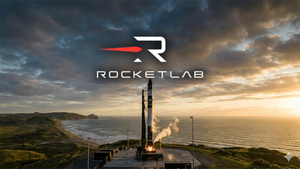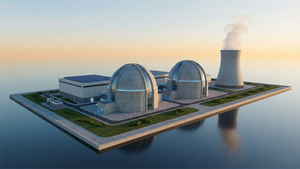
Paris, France – September 29, 2025 – In a significant move poised to reshape its integrated liquefied natural gas (LNG) value chain in the United States, global energy major TotalEnergies (EPA: TTE) today announced the acquisition of a 49% interest in natural gas-producing assets located in Oklahoma's Anadarko Basin from Continental Resources. This strategic investment, effective immediately, is designed to substantially increase TotalEnergies' U.S. natural gas production, securing a competitive, long-term supply directly connected to the crucial Henry Hub, and further solidifying its position as a leading global LNG player.
The acquisition underscores TotalEnergies' unwavering commitment to expanding its natural gas footprint as a cornerstone of its multi-energy strategy. By integrating upstream production with its downstream liquefaction and export capabilities, the company aims to enhance supply security, optimize costs, and meet the growing global demand for natural gas as a transition fuel. The market will be keenly watching how this move impacts natural gas commodity prices and intensifies competition within the rapidly evolving U.S. and international LNG markets.
A Deep Dive into TotalEnergies' Latest U.S. Energy Play
TotalEnergies' (EPA: TTE) latest strategic maneuver involves acquiring a 49% non-operated stake in a portfolio of natural gas assets in the Anadarko Basin, Oklahoma, from Continental Resources (private). These assets are highly attractive due to their characterization as "low-cost and long-plateau," indicating stable and economically viable production over an extended period. A critical advantage of these holdings is their existing connection to the Henry Hub, a pivotal natural gas pricing and delivery point in North America, via established midstream infrastructure. While the financial terms of the transaction were not publicly disclosed, the strategic value lies in securing a robust and reliable gas supply.
The acquired assets are projected to achieve a gross production of approximately 350 million standard cubic feet per day (MMscfd) by 2030, a level TotalEnergies anticipates sustaining long-term. This translates to a net gas production of around 150 MMscfd for TotalEnergies. This acquisition is not an isolated event but rather the latest in a series of strategic investments by TotalEnergies in the U.S. natural gas market. It follows the company's 2024 acquisitions of Dorado and Constellation assets in the Eagle Ford Basin and complements its existing technical production of approximately 500 MMscfd in the Barnett Basin. This consistent pattern of investment highlights TotalEnergies' aggressive strategy to expand its integrated energy model in the U.S.
The timeline leading up to this announcement has been swift, with the agreement signed and publicly disclosed on September 29, 2025. This rapid execution reflects the strategic urgency TotalEnergies places on securing competitive gas supplies. Key players in this transaction include the acquirer, TotalEnergies, a global energy major and the world's third-largest LNG player, and the seller, Continental Resources, a privately held company known for its operational expertise in the Anadarko Basin. Nicolas Terraz, President, Exploration & Production at TotalEnergies, emphasized the deal's importance in strengthening the company's integrated LNG position. Initial market reactions have been largely neutral, with industry observers recognizing the move as a logical step in TotalEnergies' broader portfolio adjustments, which also include the concurrent sale of half of its North American solar portfolio to KKR for $950 million, signaling a strategic reallocation of capital.
Winners and Losers: Market Repercussions of the Acquisition
This Anadarko Basin acquisition creates clear winners and signals potential shifts for other players in the U.S. natural gas and LNG markets.
TotalEnergies (EPA: TTE) emerges as a significant winner. The acquisition directly supports its strategy to increase U.S. natural gas production, securing competitive, low-cost, and low-emission gas supplies for its expansive global LNG portfolio. This move aligns perfectly with TotalEnergies' ambition to boost the share of natural gas in its sales mix to nearly 50% by 2030, a cornerstone of its energy transition strategy. The integration of these "low-cost and long-plateau" assets, with their direct connection to the Henry Hub, streamlines its LNG value chain, promising enhanced profitability and cash flow. The projected 150 MMscfd net gas production by 2030 from these assets will contribute significantly to the company's overall energy output, reinforcing its financial outlook and market position as a dominant force in LNG.
For Continental Resources (private), the divestment of a 49% non-operated interest represents a strategic move in portfolio optimization and capital allocation. As a privately held entity, Continental Resources has historically used asset sales to generate value and refine its focus. By monetizing a portion of its natural gas holdings while retaining operatorship, Continental can unlock capital, potentially for reinvestment in core operated assets, other oil-focused plays, or debt reduction. This partnership with a global major like TotalEnergies also lends credibility and potential operational synergies to its remaining 51% stake in the basin. While specific financial terms remain undisclosed, this transaction is consistent with a disciplined approach to asset management.
Beyond the immediate parties, the U.S. LNG export sector stands to benefit. TotalEnergies' explicit goal to feed its LNG export terminals with this increased U.S. natural gas production will strengthen demand for American gas as a reliable feedstock for international markets. This further solidifies the U.S.'s position as a leading global LNG supplier, benefiting companies involved in LNG liquefaction and export, such as Cheniere Energy (NYSE: LNG) and Sempra Infrastructure (NYSE: SRE). Midstream infrastructure providers in the Anadarko Basin, including companies like Energy Transfer (NYSE: ET), Williams Companies (NYSE: WMB), and ONEOK (NYSE: OKE), are also likely winners, as the acquired assets' existing connections to the Henry Hub ensure sustained or increased utilization of their pipelines and processing facilities. ConocoPhillips (NYSE: COP) can also be seen as a winner, having recently divested its Anadarko Basin properties for $1.3 billion, showcasing a broader trend of successful strategic divestment in the basin.
Other U.S. natural gas producers might face slight pressure as TotalEnergies' increased presence adds a well-capitalized competitor for future acreage and resources. However, the incremental production is unlikely to drastically alter the overall U.S. supply-demand balance in the short term, especially if it's primarily destined for export. The increased global LNG supply could put slight downward pressure on international LNG prices, which might indirectly affect the profitability of less integrated global players.
Broader Industry Implications and Trends
TotalEnergies' (EPA: TTE) Anadarko Basin acquisition is more than just a corporate transaction; it's a microcosm of broader, transformative trends sweeping through the natural gas and LNG industries. This move squarely aligns with the prevailing emphasis on securing long-term, low-cost gas supplies to meet escalating global LNG demand, positioning natural gas as a critical bridge fuel in the energy transition.
The U.S. has rapidly ascended to become the world's largest LNG exporter, a position solidified by robust domestic production and burgeoning international demand for flexible, cleaner energy sources. TotalEnergies' strategy of acquiring "low-cost and long-plateau" assets with direct Henry Hub connectivity exemplifies the industry's drive towards vertical integration. By controlling more of the LNG value chain, from upstream production to liquefaction and export, companies aim to ensure supply security, optimize costs, and enhance their competitive edge. This integrated approach is becoming a defining characteristic of major energy players seeking to navigate volatile markets and meet ambitious decarbonization goals.
The ripple effects of this acquisition will be felt across the competitive landscape. For TotalEnergies, this deal significantly expands its U.S. natural gas footprint, providing a more reliable and cost-effective feedstock for its global LNG portfolio. This strengthens its position against other integrated energy majors like Shell (LON: SHEL), ExxonMobil (NYSE: XOM), and QatarEnergy, potentially spurring further upstream M&A activity as competitors seek to shore up their own supply chains. Smaller, independent gas producers might face intensified competition for resources and midstream access. For Continental Resources (private), the partnership with a global major like TotalEnergies allows for asset monetization while retaining operational control, showcasing a growing trend of U.S. operators collaborating with international players to share development costs and market risks.
From a regulatory and policy perspective, increased U.S. LNG production, championed by companies like TotalEnergies, carries significant implications. While the current U.S. administration often favors "energy dominance" and streamlines permitting for energy infrastructure, it also faces growing environmental scrutiny. Policymakers must balance the economic benefits of exports with concerns over domestic energy prices and environmental impacts, particularly regarding methane emissions. The Department of Energy projects that substantially increasing LNG exports could raise wholesale gas prices by as much as 31%, creating a tension between maximizing export revenue and ensuring affordable domestic energy. Safety regulations for LNG coastal terminals are also under review, with industry advocating for performance-based rules while advocacy groups express concerns about deregulation compromising safety standards.
Historically, the U.S. natural gas sector has been characterized by cycles of significant M&A activity, driven by technological advancements, market cycles, and strategic consolidation. TotalEnergies' acquisition fits squarely into a broader trend of consolidation that has gained momentum since 2023, with companies increasingly acquiring proved reserves to diversify portfolios and enhance efficiency. Recent mega-deals, such as ExxonMobil's (NYSE: XOM) acquisition of Pioneer Natural Resources (NYSE: PXD) and Chevron's (NYSE: CVX) acquisition of Hess Corp. (NYSE: HES), highlight a strategic imperative for larger companies to expand their asset bases and market influence. This vertical integration strategy, controlling more of the value chain from wellhead to export terminal, is a recurring theme in major M&A events involving international oil companies, emphasizing supply security and cost management for export-oriented commodities like LNG.
What Comes Next: Navigating a Dynamic Energy Future
TotalEnergies' (EPA: TTE) Anadarko Basin acquisition sets the stage for a dynamic future, both for the company and the broader natural gas and global LNG markets. The short-term focus for TotalEnergies will be on integrating these "low-cost and long-plateau" assets, optimizing production, and leveraging their direct Henry Hub connectivity to enhance its U.S. natural gas supply for its global LNG portfolio. This immediate boost to its production capacity will strengthen its competitive standing and ensure a more reliable feedstock for its liquefaction facilities.
Long-term, this acquisition is a critical piece of TotalEnergies' overarching "two-pillar multi-energy strategy," which prioritizes oil and gas (primarily LNG) alongside integrated power. The company aims for a significant increase in natural gas's share of its sales mix by 2030, positioning it as a leader in the energy transition. Strategic investments, including its participation in the Rio Grande LNG Train 4 project, are projected to boost its total U.S. LNG export capacity to over 15 Mtpa by 2030. This long-term vision is underpinned by a commitment to reducing carbon emissions and eliminating methane from its gas value chain, aligning with global environmental goals.
For the natural gas market, the short term will see continued demand growth, particularly in North America and Europe, partly due to ongoing market tightness and European storage injection needs. The Anadarko Basin itself is experiencing a rebound in rig activity, projecting modest growth in gross gas volumes. However, the long-term outlook points to significant shifts. Global natural gas demand is expected to accelerate in 2026 as new LNG supply comes online from the U.S., Canada, and Qatar. While natural gas is forecasted to be the strongest-growing fossil fuel until 2035, the substantial increase in global LNG supply capacity by 2030 could lead to a "downward global LNG price trajectory with increased volatility, driven by a structurally oversupplied market" in the longer term, according to J.P. Morgan Research.
Competitors are likely to respond to TotalEnergies' aggressive expansion through various strategic pivots. This includes a heightened focus on operational efficiency, adopting advanced drilling techniques, and optimizing supply chain management. Strategic mergers and acquisitions will likely continue as companies seek to expand their market reach and strengthen their asset base, as evidenced by recent mega-deals in the U.S. oil and gas sector. Furthermore, divestitures of non-core assets to reduce debt and reinvest in more profitable ventures will remain a common tactic. Many players may also seek to emulate TotalEnergies' integrated value chain approach, controlling more of their natural gas operations from production to export to mitigate market volatility.
Emerging market opportunities are significant, driven by growing global demand in the Asia-Pacific region, where countries like India, Vietnam, and Thailand are rapidly expanding LNG regasification infrastructure. Natural gas's role as a transition fuel, helping economies shift from coal, presents substantial opportunities. The U.S. also benefits from new trade routes, with Europe's increased reliance on U.S. LNG. Domestically, the rapid expansion of data centers, fueled by AI and cloud computing, is projected to significantly increase electricity demand, potentially boosting natural gas consumption for power generation. However, challenges persist, including market volatility, geopolitical risks, potential infrastructure bottlenecks in import markets, and the increasing pressure from decarbonization policies which could lead to higher costs and impact the emission intensity of LNG production. A potential structural oversupply post-2027 also poses a challenge to profitability for some producers.
Comprehensive Wrap-Up: A New Era for U.S. Gas and Global LNG
TotalEnergies' (EPA: TTE) acquisition of a 49% interest in Anadarko Basin gas assets from Continental Resources (private) is a landmark event, underscoring a pivotal moment for both the company and the broader energy landscape. The key takeaway is TotalEnergies' strategic intent to fortify its integrated LNG value chain in the U.S., securing a long-term, low-cost gas supply directly linked to the Henry Hub. This move, following other significant U.S. shale gas acquisitions, cements TotalEnergies' position as a leading global LNG player, committed to increasing natural gas's share in its energy mix to nearly 50% by 2030 as a critical transition fuel.
Moving forward, the natural gas and LNG market is set for dynamic evolution. Global LNG demand is projected to rise significantly by 2040, primarily driven by Asian economic growth and decarbonization efforts. The U.S. and Qatar are poised to lead this supply expansion, with numerous large-scale liquefaction projects coming online. However, this robust supply growth could lead to a period of oversupply from 2027 onwards, potentially resulting in lower and more volatile spot prices. Despite this, U.S. Henry Hub natural gas prices are expected to see gradual increases, primarily due to strong LNG export growth outpacing domestic production.
The lasting impact of TotalEnergies' increased U.S. natural gas presence is multifaceted. It signifies a strategic commitment to vertical integration, ensuring cost-competitive and stable gas supplies for its expanding global LNG portfolio. TotalEnergies is solidifying its role as a leading exporter of U.S. LNG, aiming for over 16 Mtpa by 2030, which will significantly influence global supply dynamics. Crucially, its emphasis on natural gas as a "bridge fuel" aligns with global decarbonization efforts, particularly in facilitating the shift from coal in developing economies. This strategic expansion is designed to deliver resilient shareholder returns, balancing high-margin LNG infrastructure with its broader energy portfolio.
Investors should closely watch several key indicators in the coming months. The commissioning timelines of new LNG liquefaction projects in the U.S. and Qatar will be critical, as delays or accelerations could significantly impact supply-demand balances and prices. Global demand dynamics, especially in emerging Asian economies, will dictate the pace of LNG consumption. European gas storage levels and winter weather patterns will continue to influence short-term price volatility. Geopolitical developments, U.S. natural gas production rates, and evolving regulatory and environmental policies (especially concerning methane emissions) will also be crucial factors affecting the cost and feasibility of natural gas and LNG projects. Finally, monitoring capital allocation strategies and Final Investment Decisions (FIDs) for new LNG projects by major energy companies will provide insights into long-term supply commitments and market confidence.
This content is intended for informational purposes only and is not financial advice.





